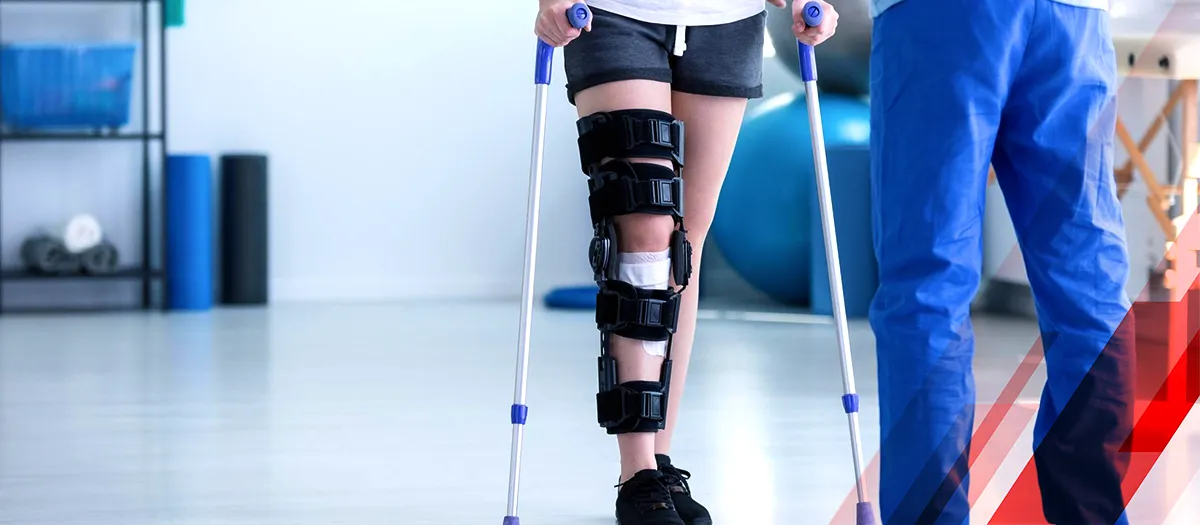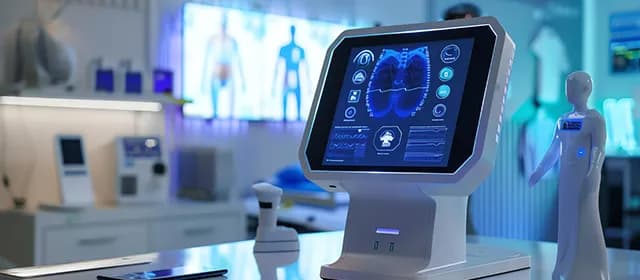Severe injuries or chronic medical conditions can lead individuals to rely on orthopedic devices to stabilize their musculoskeletal system and improve mobility. Whether it's a result of an accident or a chronic condition, these devices play a crucial role in providing support and improving the quality of life for those in need. Without the use of these devices, a patient may find themselves limited to a wheelchair, even though they still have the potential to regain their ability to walk.
So, let's explore the diverse world of these devices, delve into the latest trends, and learn how they help improve patient outcomes.
What are Orthopedic Devices?
Orthopedic devices, or orthopedic equipment, are specialized medical devices designed to prevent, manage, or treat musculoskeletal problems and conditions. They are used to support, stabilize, or replace bones, joints, and other structures in the musculoskeletal system. These devices play a crucial role in orthopedic medicine by helping patients regain mobility, alleviate pain, and improve their quality of life.
Orthopedic medical devices play a crucial role in the healthcare industry, helping millions of people worldwide manage musculoskeletal conditions and improve their quality of life. The global orthopedic devices market is expected to reach an estimated USD 53.33 billion by 2030.
Types of Medical Devices Used in Orthopedics
Orthopedic devices encompass a wide range of products used in treating various musculoskeletal disorders. Below are the different types of devices:
- Internal Fixation Devices: These devices are used to internally fixate fractured bones or provide stability to the skeletal system. Examples include screws, plates, wires, pins, intramedullary rods, and nails.
- External Fixation Devices: External fixation devices are used to stabilize fractures or lengthen bones. They involve the use of external frames or supports to immobilize and align the affected area. Examples include fracture fixation devices for the radius, tibia, and pelvis, as well as devices for bone lengthening like the Ilizarov device.
- Joint Replacement Implants: Joint replacement implants are used to replace damaged or diseased joints, such as the hip, knee, or finger joints. These implants are designed to restore joint function and alleviate pain.
- Orthotic Devices: Orthotic devices, also known as orthoses, are used to support, stabilize, or correct musculoskeletal problems. They include back supports and braces, foot and ankle supports, cervical collars, knee and elbow braces, and hip supports.
What Pros Do Orthopedic Devices Offer?
Orthopedic devices offer several benefits including
- Improved Mobility: These devices can significantly improve mobility for individuals with musculoskeletal conditions or injuries.
- Enhanced Movement: They help restore joint function, reduce pain, and enhance overall movement.
- Relieve Pain: They are designed to alleviate pain associated with musculoskeletal disorders. For example, braces and supports can provide stability and reduce discomfort in joints, while spinal implants can help relieve pain caused by spinal conditions.
- Better Quality of Life: By improving mobility and reducing pain, orthopedic devices contribute to an enhanced quality of life for individuals with musculoskeletal issues.
- Improved Activities: These devices enable individuals to perform daily activities, participate in physical activities, and regain independence.
- Rapid Healing: Some orthopedic fixation devices, like screws, plates, and rods, provide support and stability to fractured or damaged bones. They help in the faster healing process by immobilizing the affected area and facilitating proper alignment.
- Customizability: These devices can be customized to meet individual patient needs.
- Enhanced Precision: Some advanced devices, such as robotic surgery and smart implants, have improved surgical precision, outcomes, and patient recovery times.
- Faster Recovery: These devices result in smaller incisions, reduced tissue damage, faster recovery, and less postoperative pain for patients.
4 Trends in Orthopedic Devices to Look Out for in 2024
Below are the trends in orthopedic equipment that are reshaping the medical sector and patient care:
1. Adoption of Robotic Surgeries
Robotic-assisted surgery has gained significant attention in orthopedics, with companies developing systems for hips, knees, spines, and trauma. By 2024, major orthopedic device companies are expected to adopt robots globally. These can enhance accuracy, precision, and implant placement, improving longevity and functionality.
The demand for robotic surgery is expected to remain strong, with refinement, feature richness, and precision expected. Companies should harness this trend to stay competitive.
2. Integration of 3D Printing
3D printing technology revolutionizes the orthopedic sector by creating patient-specific implants and surgical instruments. They enhance precision and customization and optimize implant sizing, leading to improved surgical outcomes and patient satisfaction. 3D printers aid in creating implant prototypes, aiding surgeons in pre-planning, and allowing detailed visualization of bone deformities and fractures.
With these benefits, the FDA has approved 3D printing for implantable orthopedic medical devices, allowing manufacturers to create personalized prosthetics and metallic implants.
3. Increase in Use of WHD
Wearable health devices (WHDs) are becoming increasingly popular for tracking individual fitness and health parameters. They provide real-time data on patients, especially those needing close monitoring during preoperative and postoperative care.
These devices, equipped with sensors, help orthopedics assess postoperative progress and optimize rehabilitation. Arthrex offers a range of orthopedic devices, including wearable solutions, for various musculoskeletal conditions.
4. Use of Augmented Reality
Augmented reality (AR) technology is revolutionizing orthopedic surgery by offering virtual information from surgeons' fields of view. AR devices offer better surgical navigation, 3D fluoroscopy, and virtual training for procedures, reducing errors and ensuring safer procedures with effective results.
The medical field has adopted AR for complex and risky procedures. In this field, Zimmer Biomet offers a wide range of orthopedic products and solutions using AR technology to enhance accuracy and reduce surgical time.
To Conclude
Orthopedic devices play a crucial role in the field of musculoskeletal health. These devices are designed to provide support, stability, pain relief, and improved mobility for individuals with orthopedic conditions or injuries.
Advancements in technology, such as AR and wearable health devices, have emerged as a significant aspect of orthopedic care. These devices allow individuals to monitor their health parameters, track activity levels, and aid in rehabilitation and performance enhancement.
While the use of robotics and 3D printing in orthopedics is still an evolving field, they hold promise for transforming the way orthopedic procedures are performed. As orthopedic devices continue to evolve and innovate, they will provide patients with better treatment options, improved quality of life, and a faster recovery.




